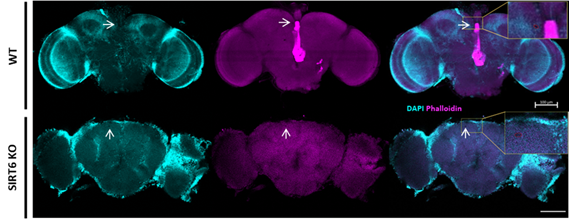Gène Nup107, vers de nouveaux traitements de la stérilité : UHJ, Shaare Tsedek, Bar-Ilan, Hadassah, Bethlehem U.

[:fr]Voilà un bel exemple de coopération entre des scientifiques d’Israël et de Cisjordanie qui montre que la science est le meilleur facteur de paix. Des scientifiques israéliens de l’Université Hébraïque de Jérusalem (Dr Offer Gerlitz, UHJ), de Shaare Tsedek (Pr Ephrat Levy-Lahad), de Bar-Ilan, de Hadassah, de l’Université de Bethlehem ont fait une découverte qui va permettre de mieux comprendre le développement des ovaires. Cela devrait permettre aux médecins de diagnostiquer les maladies à l’origine de l’infertilité et l’absence de puberté chez certaines femmes. Cette découverte qui a fait la Une du prestigieux Journal of Clinical Investigation, ouvre la voix vers le développement de nouveaux diagnostics et de traitements de la stérilité.
Le Dr Offer Gerlitz à l’Université Hébraïque de Jérusalem, explique : «La caractérisation du gène Nup107 et la découverte de sa fonction dans le développement ovarien fournira une meilleure compréhension de la signalisation entre le cytoplasme et le noyau impliqué dans le développement de l’ovaire. Sur le plan médical, elle permet le diagnostic des patients et des porteurs de la maladie, ainsi que la prévention et le diagnostic prénatal de l’absence de puberté et de l’infertilité. Cela pourrait également conduire à de nouveaux traitements de l’infertilité et de l’insuffisance ovarienne précoce »…
Les chercheurs ont étudié une famille consanguine (descendant d’un ancêtre commun) où quatre cousines présentaient une dysgénésie ovarienne (absence de développement de l’ovaire), alors qu’elles avaient deux chromosomes X, comme toute femme normalement constituée. En raison de leur manque d’hormones sexuelles, ces jeunes filles ne suivaient pas le processus normal de la puberté. Ces femmes ont toutes été traitées avec des hormones de substitution, ce qui leur a permis d’atteindre une taille normale et d’avoir des menstruations. En faisant la cartographie par homozygotie des génomes des jeunes filles, les chercheurs ont découvert le gène Nup107 à l’origine de l’anomalie. Ce gène code pour une protéine qui est un composant important de la chaîne qui relie le noyau de la cellule (où se trouve l’ADN) à son cytoplasme (le reste des parties de la cellule). Cette étude a été menée sur le génome de mouches drosophiles, l’un des organismes modèles le plus étudiés en recherche biologique, en particulier en génétique et en biologie du développement.
Cette recherche est le fruit, notamment, de la collaboration entre les laboratoires du Dr Gerlitz, et des laboratoires des Pr Zangen et Levy-Lahad de Hadassah et de Shaare Tzedek. Les laboratoires des Pr Zangen et Levy-Lahad ont identifié la famille consanguine qui présentait une dysgénésie ovarienne : ils ont découvert la mutation du gène candidat. Le laboratoire du Dr Gerlitz a généré le modèle de la maladie chez la mouche drosophile.
Article complet dans le N°18 d’Israël Science Info, cliquez sur Je m’abonne
Publication dans Journal of Clinical Investigation[:en]Scientists at the Hebrew University of Jerusalem’s Faculty of Medicine have announced a discovery that is expected to allow doctors to diagnose a disease causing infertility and lack of puberty in women, with implications for the development of future treatment options. The research paper was chosen as the cover story for the November issue of the prestigious scientific magazine Journal of Clinical Investigation, and was accompanied by a special Commentary written by two world-renowned experts in the fields of Drosophila and human reproductive systems.
The mammalian ovary functions not only as the reproductive organ that contains the germ cells (oocytes) responsible for creating the next generation, but also as a hormonal gonad (reproductive gland) regulating many aspects of female physiology and development. Very little is known about the processes involved in the development of the ovary and the egg. To date, only a few genes have been identified as important in ovarian development, and any findings in this area are of great importance with regard to the fields of infertility and fertility.
Researchers discovered a consanguineous family (descended from a common ancestor) where four female cousins presented with ovarian dysgenesis (a lack of ovarian development), though each possessed two X chromosomes, as does a normal woman. As a result of their lack of sex hormones, these girls did not undergo the regular process of puberty. The women were all treated with replacement hormones, which allowed them to reach a normal height and to experience a monthly period.
Lead researchers on the project were Dr. Offer Gerlitz (Ph.D.), Dept. of Developmental Biology and Cancer Research, Institute for Medical Research Israel-Canada, The Hebrew University Faculty of Medicine; Prof. David Zangen (MD), Head of Paediatric Endocrinology at Hadassah Medical Center (Mt. Scopus); and Prof. Ephrat Levy-Lahad (MD), Professor of Internal Medicine and Medical Genetics at Hebrew University and Director of the Medical Genetics Institute at Shaare Zedek Hospital.
Homozygosity mapping of the girls’ genomes (searching for regions of genetic commonality among them but not shared by their healthy relatives) and sequencing of the entirety of their coding genomes was performed. Using these methods, researchers identified a mutation in the gene Nucleoporin 107 (Nup107), differentiating between the affected patients and their healthy relatives. This gene codes for a protein which is an important component of the channel that connects between the cell’s nucleus (where the DNA is situated) and its cytoplasm (the remainder of the cell’s parts).
At this stage, the search began for a model system to provide experimental proof that linked the suspect mutation to the observed ovarian dysgenesis phenotype (no ovaries). The reproductive process, the division of germ cells (meiosis), and the formation of the oocyte are all partially parallel in the fruit fly (Drosophila) and in humans. Therefore, the researchers generated flies with a mutation in Nup107 (of the fly), identical to the mutation found in the affected girls.
To the researchers’ amazement, many of the female flies demonstrated significant impairment in ovarian development (as in humans). The remaining mutant female flies did lay eggs, however quite minimally, and the majority of the eggs were deformed (did not hatch to give descendants).
These results proved the critical importance of this mutation and of the gene Nucleoporin 107 in the development of the ovary and formation of the oocyte.
Dr. Offer Gerlitz at the Hebrew University explains: “The characterization of the Nup107 gene and discovering its function in ovarian development will provide a greater understanding of how signaling between the cytoplasm and the nucleus is uniquely involved in ovarian development. On a medical level, it will allow the diagnosis of both patients and carriers of the disease, as well as prenatal diagnosis and prevention of this difficult morbidity of lack of puberty and infertility. Potentially, it could also lead to a method of treatment for problems of infertility and premature ovarian failure.”
This Drosophila model system of ovarian dysgenesis was developed using a combination of very advanced genetic and molecular techniques common in Drosophila research. In the opinion of Dr. Gerlitz, this system will allow for the identification of signaling pathways and new genes crucial in ovarian and oocyte development. Therefore, this research will have widespread implications, in the field of infertility as well as in many others, in medicine and in cell biology.
The research is a product of collaboration between the labs of Dr. Gerlitz, a researcher at the Hebrew University, and Profs. Zangen and Levy-Lahad from Hadassah and Shaare Zedek, respectively. The labs of Profs. Zangen and Levy-Lahad identified the consanguineous family with ovarian dysgenesis and discovered the candidate mutation and gene, while the lab of Dr. Gerlitz generated the disease’s model in Drosophila. This model, on the one hand, proved the involvement of the mutation and the Nup107 gene in the ovarian dysgenesis. On the other hand, it will allow future research into the identification of new signaling pathways and genes involved in ovarian development.
Collaborating institutions include the Medical Genetics Institute, Shaare Zedek Medical Center; Hebrew University, Hadassah Medical School, Jerusalem; Department of Developmental Biology and Cancer Research, Institute for Medical Research Israel-Canada, Hebrew University Faculty of Medicine; Genetic Clinic, Hadassah Medical Center; Hereditary Research Laboratory, Bethlehem University; Faculty of Medicine in the Galilee, Bar-Ilan University; Division of Pediatric Endocrinology, Hadassah Hebrew University Medical Center.
The study was supported by grants or gifts to various researchers by: US Agency for International Development program for Middle East Regional Cooperation; the Hassenfeld family; the Israel Science Foundation; and the Legacy Heritage Biomedical Program of the Israel Science Foundation.
The Institute for Medical Research-Israel Canada (IMRIC), in the Hebrew University of Jerusalem’s Faculty of Medicine, is one of the most innovative biomedical research organizations in Israel and worldwide. IMRIC brings together the most brilliant scientific minds to find solutions to the world’s most serious medical problems, through a multidisciplinary approach to biomedical research.[:]







